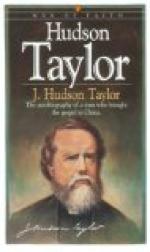The impression produced varies with various persons. One accomplished writer finds it “not unlike that made by the photographs of those gigantic structures in the northern and eastern parts of India, which are seen in full series on the walls of the South Kensington, and by their barbaric profusion of ornamentation and true magnificence of design give the stay-at-home Briton some faint inkling of the empire which has invested his queen with another and more high-sounding title. Yet when close at hand the building does not bear out this connection with Indian architecture of the grand style; it might be mere chance that at a distance there is a similarity; or it may be that the smallness of size in the decorations as compared to the structure itself explains fully why there is a tendency to confuse the eye by the number of projections, arches, pillars, shallow recesses, and what-not, which variegate the different facades. The confusion is not entirely displeasing; it gives a sense of unstinted riches, and represents the spirit that has reared the pile.”
* * *
Nor let the dear love of its children
grow cold
Till the channel is dry where its waters
have rolled.
Oliver Wendell Holmes.
* * *
The Governor’s room, the golden corridor, the Senate staircase, the Senate chamber, the Assembly chamber, and the Court of Appeals room are interesting alike for their architectural stone work, decorations and general finish. The State Library, dating from 1818, contains about 150,000 volumes. The Clinton papers, including Andre’s documents captured at Tarrytown, are the most interesting of many valuable manuscripts. Here also are a sword and pistol once belonging to General Washington. The Museum of Military Records and Relics contains over 800 battle flags of State regiments, with several ensigns captured from the enemy. Near the Capitol are the State Hall and City Hall, and on the right, descending State Street, the Geological Hall, well worthy an extended visit. The present St. Peter’s Episcopal Church, third upon the site, is of Schenectady blue stone with brown trimmings. Its tower contains “a chime of eleven bells and another bell marked 1751, which is used only to ring in the new year.” Washington Park, consisting of eighty acres and procured at a cost of one million dollars, reached by a pleasant drive or by electric railway, is a delightful resort. It is noted for its grand trees, artistic walks and floral culture. Several fine statues are also worthy of mention, notably that of Robert Burns (Charles Calverley, sculptor), erected by money left for this purpose by Mrs. McPherson, under the careful and tasteful supervision of one of Albany’s best-known citizens, Mr. Peter Kinnear. A view from Washington Park takes in the Catskills and the Helderberg Mountains.
* * *
No wonder that his countrymen today, led by the Congress of this great Republic, celebrate the transaction and the scene where Washington refused to accept a crown.
William M. Evarts.




